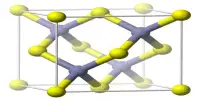Gallium – sometimes known as the terminator metal for its resemblance to the conversion cyborg killer in conversations among other strange features, this metal can harden at room temperature but it is so soft that you can cut it with a butter knife. If you hold it in your hand, it will pass the melting point and become a shiny mash.
As the physical review letter is now published through a new paper, scientists have been able to make its drops with a clear rhyme, somewhat like the human heart. The new study, led by Wollongong, begins by pointing out that different techniques can be used to initiate liquids such as mercury – but they often produce “irregular motions” that are “difficult to deactivate or control.”
The authors then explained that, for the first time, they were able to use electric current to display the “heartbeat effect” for metallic droplets of gallium, moving it to a recognizable, clearly defined frequency. This strange action presents an exciting discovery not only for the group, but they also point out that the application of electric current changes the symmetry of the drops. This means that each time it hits the gallium, it moves at a speed of one centimeter (0.09 inches) per second.
Remember this discovery was not exactly a walk in the park. The heated liquid gallium was placed on a circular electron. It is immersed in a hydroxide solution, which is given an electric field for contact with it, as elucidated by Forbes. This triggers an electronic chemical oxidation reaction, and gallium stem oxidation begins. As a result, gallium oxide has less surface tension than its original form, and this is where scientific magic takes place.
Now, in crude matter describing surface tension, there are attractive forces between the particles on the surface of any material. This means less that it can’t hold together evenly and it starts to flatten into a pancake-like shape. The electrode, which is slightly tilted, moves this flattened stem away from it. This removes it from the electrochemical reaction, causing it to pop up again in a more spherical shape.
This cycle continues at a fairly rapid rate, which mimics the heartbeat – and it helps the drop to move upwards. Change the electric current and change the heartbeat, up to 610 beats per minute. This is a very great thing. Watch this video showing the magic of the New Scientist hand:
This is of course the very first day; this is currently a proof-of-principle strategy. However, if you can imagine for a moment the gallium-infected muscles – perhaps artificial ones or so-called “soft robots” – it is not difficult to see how electric currents could be used more precisely to move them. Considering how gallium can be moldable and how often it has already been used in electronics, one can see how it will not remain a sci-fi concept forever. In addition, as the authors note, many organic species already use “great methods” to drive internal fluids around and engage in the necessary biochemistry.
In contrast, human fluid technology still relies on “dysfunctional” mechanical flow systems. Gallium Hearts may then be our way of interacting with evolutionary biology. This or we have just seen the beginning of the development of the T-1000. A kid unceasingly, the team behind the paper explained that this time the traveler served as the primary inspiration for the killer project.













